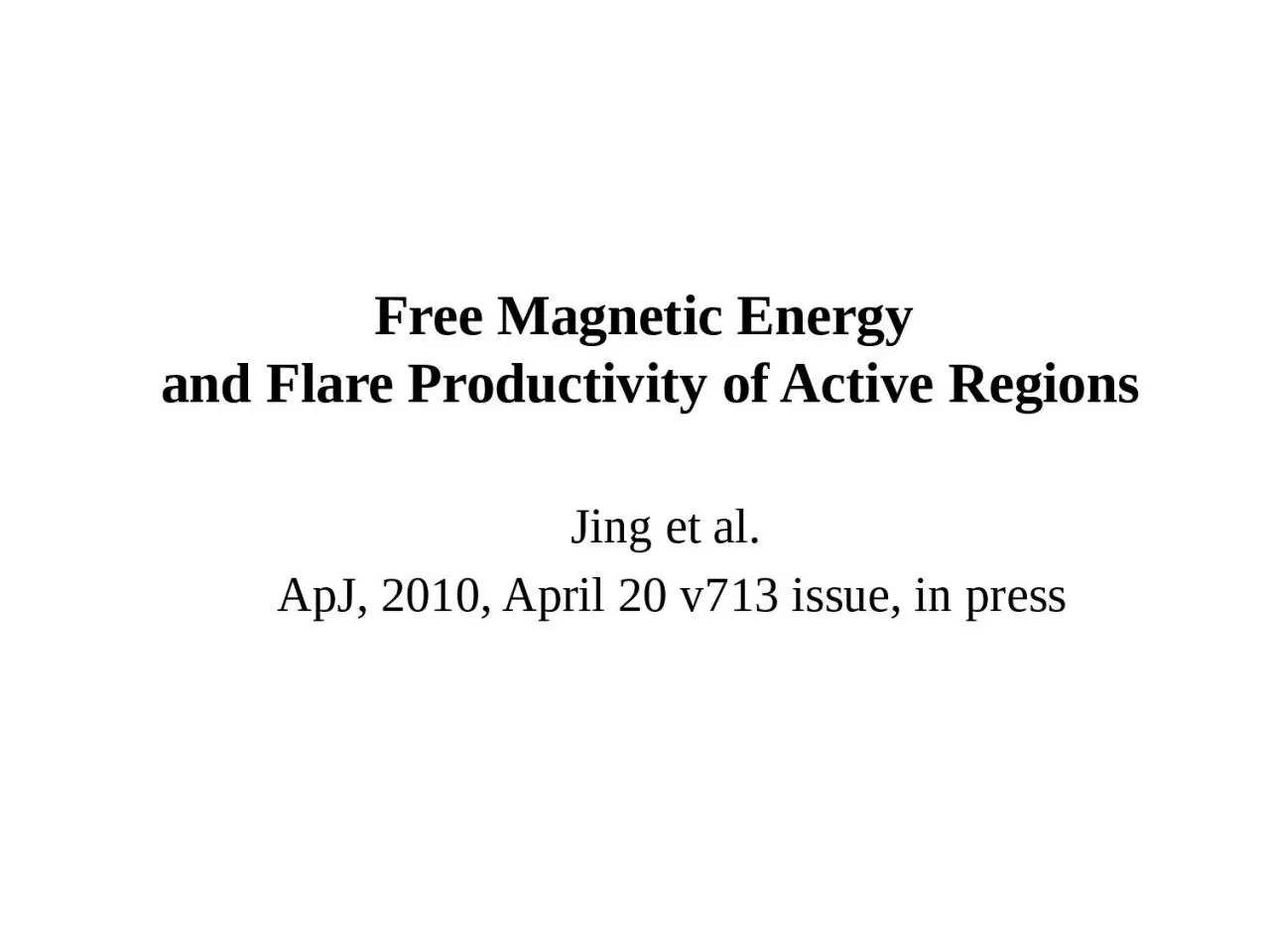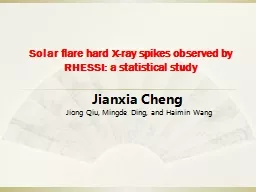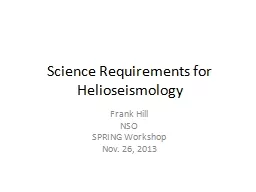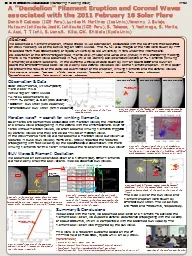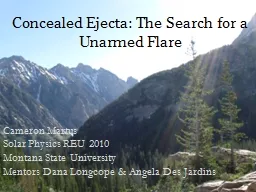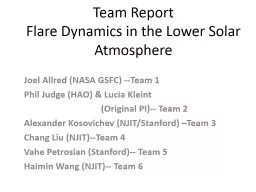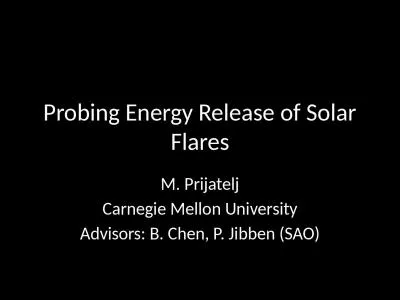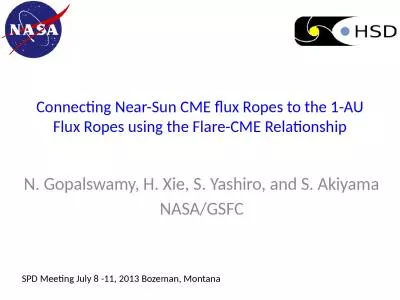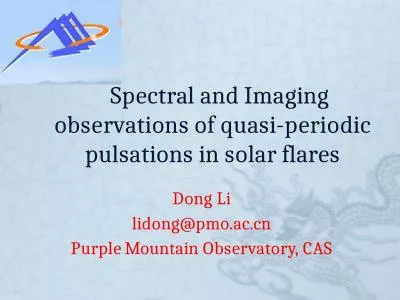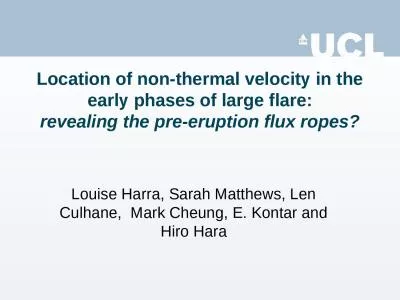PPT-Free Magnetic Energy and Flare Productivity of Active Regions
Author : sophie | Published Date : 2024-03-13
Jing et al ApJ 2010 April 20 v713 issue in press Eq 1 Free Magnetic Energy E free Soft Xray Flare Index FI Eq 2 where is the length of time window measured
Presentation Embed Code
Download Presentation
Download Presentation The PPT/PDF document "Free Magnetic Energy and Flare Producti..." is the property of its rightful owner. Permission is granted to download and print the materials on this website for personal, non-commercial use only, and to display it on your personal computer provided you do not modify the materials and that you retain all copyright notices contained in the materials. By downloading content from our website, you accept the terms of this agreement.
Free Magnetic Energy and Flare Productivity of Active Regions: Transcript
Download Rules Of Document
"Free Magnetic Energy and Flare Productivity of Active Regions"The content belongs to its owner. You may download and print it for personal use, without modification, and keep all copyright notices. By downloading, you agree to these terms.
Related Documents

